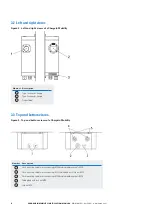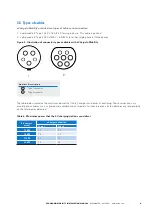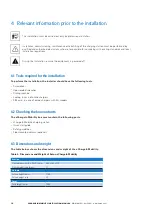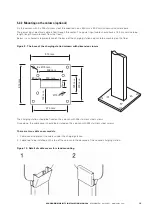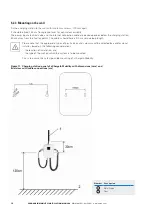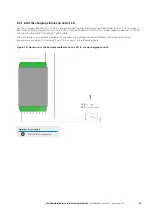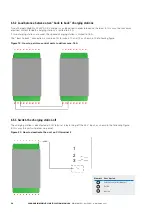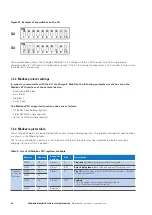
17
XCHARGEIN MOBILITY INSTALLATION MANUAL
MN191005EN April 2021 www.eaton.com
00
Title
6. Electrical connections and wiring
6.1 Cautions
Installation, commissioning, maintenance or retrofitting of the charging station must be performed by
qualified and authorized electricians who are responsible for complying with existing standards and local
installation regulations.
For safety reasons, an appropriately rated input load disconnector must be provided for each individual
product. No load should be connected directly to the product during wiring.
Connect only one charging station for each circuit breaker and residual current device (RCD). The circuit
breaker serves as a mains disconnector.
The protective earth conductor must have a cross-section at least equal to or greater than the cross-section
of the cables for connection to the public grid (AC), and in accordance with the requirements of local
regulations.
Before starting connection operations, ensure that the external AC-line main switch is disconnected and that
circuit breakers are open.
Any operation requiring the opening of the main converter box can lead to electric shock hazards.
6.2 Standard wiring
To connect the station to the electrical panel, a professional installer or qualified electrician should consider the
following guidelines and consult the table below.
Table 6. Overview of parameters for dimensioning of the protective devices and power supply line
xChargeIn Mobility power range
3.7 kW
7.4 kW
11 kW
22 kW
Input voltage
230 V AC
230 V AC
400 V AC
400 V AC
Power supply terminal block max. section
16 mm
2
16 mm
2
16 mm
2
16 mm
2
RCD protection at panel
30 mA
30 mA
30 mA
30 mA
Rated current at panel
20 A
40 A
20 A
40 A
The power losses on the power supply line must be less than +/-10 % of the rated power in accordance
with IEC 60038 and local standards. For this reason, the cable sections or line length must be reassessed
by a professional electrician in accordance with maximum power loss regulations. Also, when dimensioning
the power supply line, observe the possible reduction factors and the increased environmental temperatures
inside the connection area of the charging station (see temperature rating of the supply terminals). Under
certain circumstances, this can increase the cable cross-section and change the temperature resistance of
the power supply line.
A qualified electrician or professional installer must define the types of RCD and circuit breaker.






